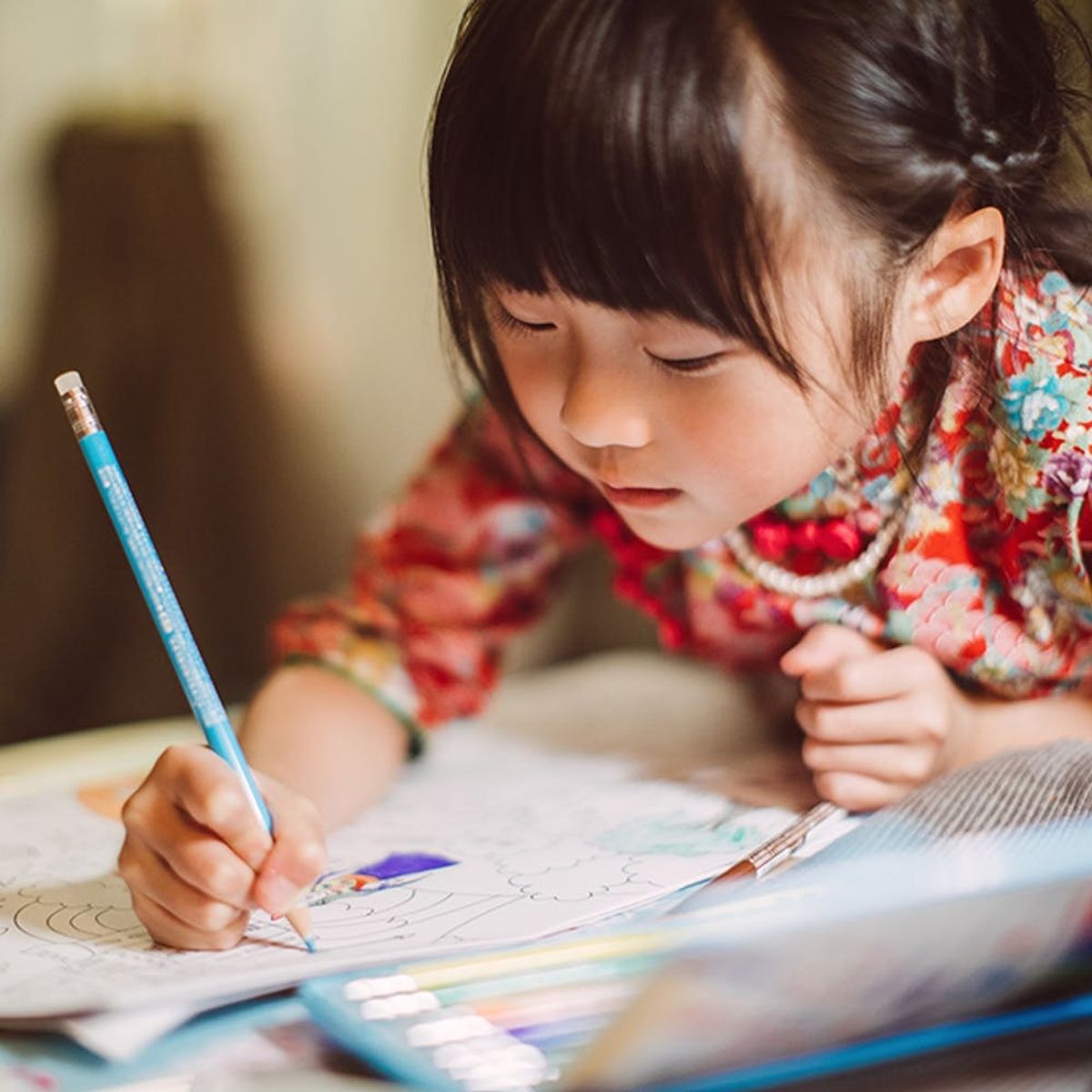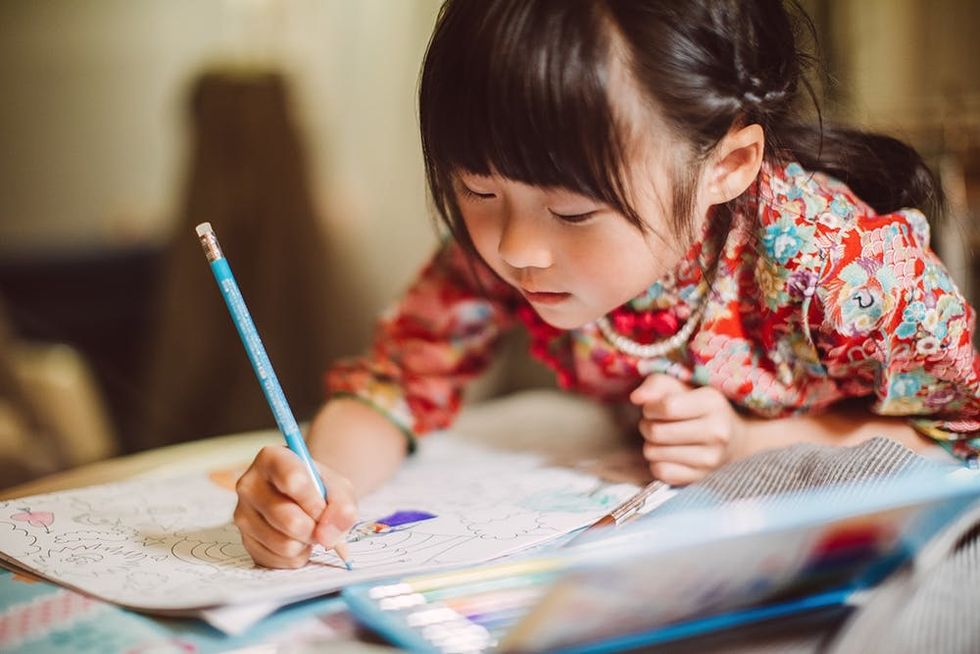Your kid loves art — and art loves her back.
8 Reasons Your Child Needs Art In Their Life

If you’re crafty prowess only goes as far as coloring pages, don’t stress! Just hand over the finger paints and watch your kiddo go to town. From development goals to learning that pays off later in life, art activities are packed with pure awesomeness. Check out the bounty of benefits that painting, drawing, sculpting, and getting crafty bring.

1. Fine Motor Development: Whether your tot is holding a paintbrush, pencil, marker, or crayon, they’re building hand and finger skills. Fine motor development (small movements of the hands) are necessary for writing, eating, dressing, and just about everything your kiddo does daily.
2. Creative Thinking: Technical skills? Even though art helps your child to build concrete abilities (again, fine motor skills), it does so much more. As your pint-sized Picasso explores artistic process, they’re experimenting, making discoveries, and learning how to think outside of the box.
3. Solving Problems: Problem-solving skills and creativity go hand-in-hand. Artsy explorations give your kid the chance to investigate, examine, evaluate, and make conclusions. Something as seemingly simple as puzzling together a cat collage out of a circle and two triangles or figuring out how to make purple from blue and red can help your tot to problem-solve, building skills that they’ll use now and for a lifetime.
4. Emotional Skill-Building: Your toddler is not a master of their emotions. (For that matter, neither is your preschooler.) But art has the amazing ability to connect us with our emotions — and this goes for your child too. Younger kids can work through powerful emotions by splashing paint on paper or coloring in a whirlwind of movement, while older children can create art that represents what they’re feeling inside.
5. Cultural Awareness: Art is universal — and global. Every culture has its own distinct type of art. Instead of just making art, your creative kid can learn about it too. A mini-lesson in global art can help your son or daughter understand different cultures and different people.
6. Language Skills: There’s no reason your child should create in silence. As your child creates, ask open-ended questions about what they’re doing. These queries don’t have yes or no answers, making them ideal for opening up your child’s mind and ability to communicate.
7. Visual-Spatial Abilities: These skills allow your child to understand the world through their own eyes — and process it. Cutting paper, sculpting with clay, putting crayon to paper, painting a portrait, and all the other artsy activities your child does build these abilities. Your littles will continue to use visual-spatial skills as they move through school. The basic abilities they’re developing through art now will eventually translate into literacy and math learning.
8. Entertaining Education: The many educational and developmental benefits of art-making aren’t the only reason for your child to try these activities. Even though you know art is helping your child to grow as a learner (and as a person), this isn’t the same take-away your kiddo gets from crafty-time. For your child, art is one word: Fun!
RELATED: 9 Paint Products Your Kids Will Adore
(Photo via Getty)


















